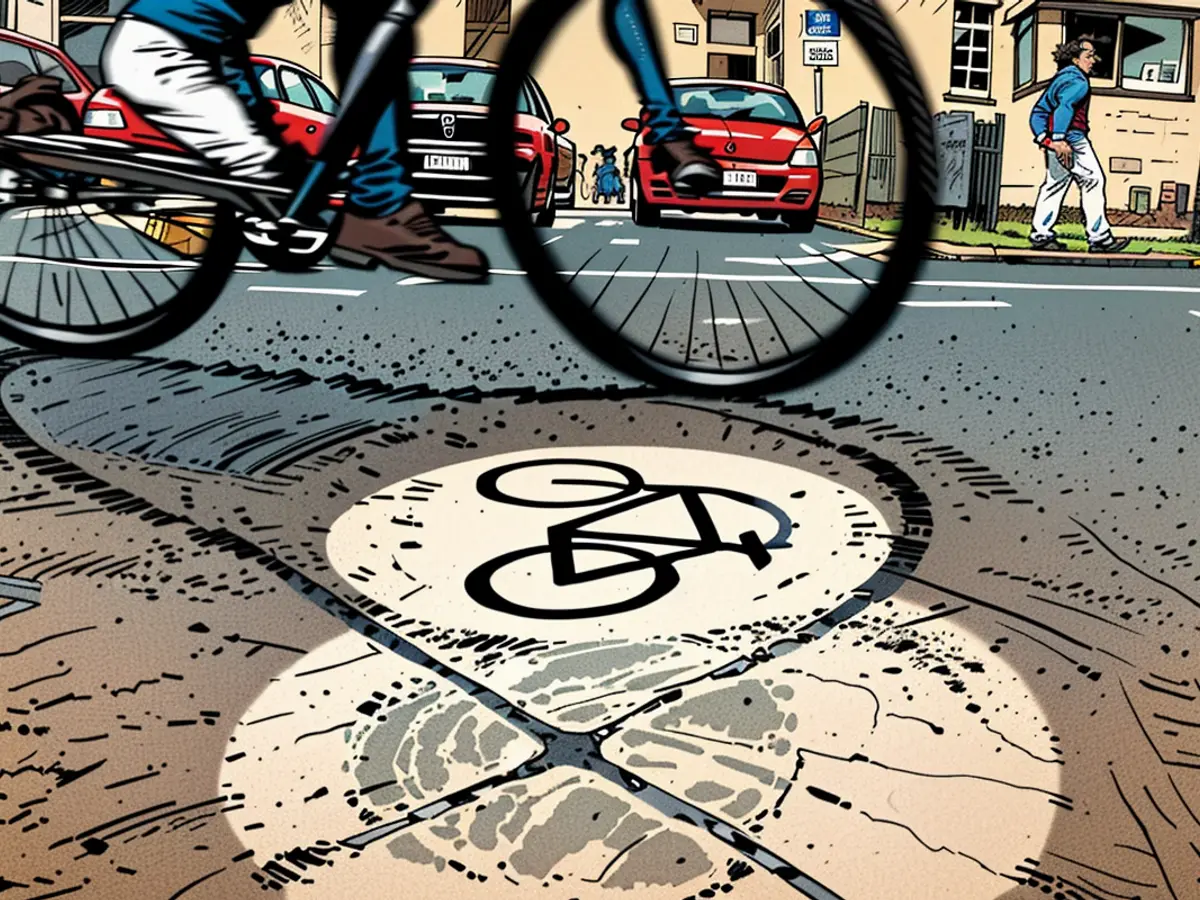Urban centers or places where people live, work, and play. - Cycling-friendly municipalities: varying approaches adopted by local governments
Bicyclists often encounter a frustrating situation: standing at a red traffic light with no other vehicles around, yet the light doesn't turn green. The cause might be related to the contacts, a technology incorporated into many roadways that detects waiting vehicles. Unfortunately, this system isn't always reliable for bikes. In Hessian municipalities, it's a common problem.
For instance, in the Taunus community of Oberursel, pictograms show cyclists where to wait for the best induction loop detection. There are approximately 100 designated bicycle parking spots, marked by painted bicycle symbols, according to the city administration. These markings have been repainted recently. Plans exist to introduce other detection technologies at newer traffic lights, which would better and more safely recognize cyclists and pedestrians. Potential options include video, radar, or infrared sensors.
The reason cyclists frequently fail to be detected by induction loops is that modern bicycles often have minimal metal content, reducing the effect of the induction loop's electrical field. While sensitivity can be increased, this could result in nearby cars setting off the signal, causing the traffic light to change prematurely.
The city of Kassel already employs various detection systems, such as video cameras, radar detectors, and thermal imaging cameras at numerous locations, instead of induction loops. Each technology has its pros and cons depending on the environment. For example, video cameras might struggle to identify cyclists in the dark. Radar detectors generally work well, but every movement could trigger the traffic signal - even that of a passing bird.
Modern thermal imaging cameras, combined with integral video cameras, typically provide highly accurate detection rates. These cameras are, however, the most expensive. In Kassel, separate request buttons at traffic light poles cater to cyclists.
Marburg is deploying video cameras to better recognize cyclists and pedestrians, with many installations boasting dedicated bicycle parking spaces. These areas are frequently marked red and often grant cyclists a green light three seconds before cars.
In Frankfurt, induction loops are installed diagonally in front of stop markings, ensuring better detection areas and increased responsiveness to the presence of metal. Additionally, overhead detection is utilized, sometimes leading to false positive triggers where the light changes without a bicycle rider being present.
Wiesbaden uses thermal cameras in lieu of induction loops, particularly during maintenance and upgrades. Unlike induction loops, thermal cameras fail to detect non-metallic bicycle frames. The city spokesperson suggested marking the optimal parking spots on the road at certain locations.
Offenbach also favors a gradual adoption of other systems to replace induction loops. Radar detectors and infrared cameras are commonly employed here, ensuring that the traffic light turns green for waiting people regardless of their bicycle's metal content.
Spokespersons from several cities emphasized the advantages and limitations of each detection technology based on their respective environmental conditions.
Read also:
In Hesse, many municipalities struggle with bicycles not being reliably detected by traffic light induction loops due to their minimal metal content. To address this issue, the city of Kassel uses alternative detection technologies, such as video cameras and thermal imaging cameras. In Oberursel, pictograms guide cyclists to wait in areas with optimal induction loop detection. The city of Wiesbaden has implemented thermal cameras in lieu of induction loops, especially during maintenance and upgrades. Despite these efforts, some cities, like Marburg and Offenbach, are gradually adopting other detection systems, like radar detectors and infrared cameras, to improve cycle detection. This shift is driven by the advantages and limitations of each technology based on specific environmental conditions.








